Luis Diaz‘s second knee injury will see him sidelined until March, so how concerning is it and is it affected by his previous knee injury? Dr. Raj explains.
Diaz initially injured his left knee during a tussle with Arsenal midfielder Thomas Partey in October and was subsequently ruled out until after the World Cup.
No official confirmation was ever given on Diaz’s injury specifics but based on the mechanism of injury (how it happened) and reported timeline, it most sounded like an injury to the medial collateral ligament (MCL).
For more reasoning and information on that thought process, you can read my piece on it here.
Regardless of the specific diagnosis, Diaz’s physiotherapy return to play process looked to be on track and progressing without any hiccups as he returned to full team training at the club’s warm-weather Dubai portion of their World Cup hiatus (a second pre-season for all intents and purposes).
However, during training “he felt something” in the knee according to the gaffer Jurgen Klopp.
Although Diaz felt OK the next day, the club decided to be overly cautious and had him go through imaging for a full assessment.
Per the imaging, Diaz was deemed to have injured his lateral collateral ligament (LCL) and would now require surgery (note, his first knee injury did not require surgery).
What is an LCL injury?
The lateral collateral ligament is the major ligament on the lateral (outer) aspect of the knee.
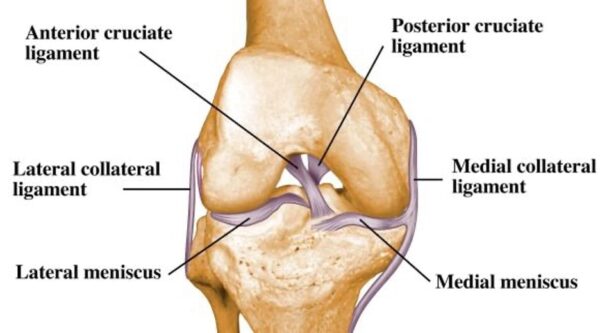
Its primary role is to help the knee joint (tibofemoral joint) resist against what’s known as “varus” force – force that travels outwards to inwards across the knee.
However, when the knee is pushed past its normal limits and outside of its normal range of motion, the stabilising LCL can stretch and become damaged.

The ligament can be damaged across a range of severity, depending on just how much force and stretch was applied.
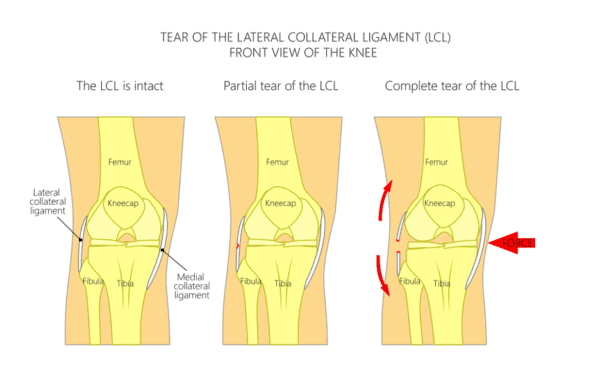
This damage is often categorised into categories based on the extent of tearing – grade 1 meaning less than 25% tear, grade 2 a 25-75% tear and a grade 3 tear (rupture) greater than 75%.
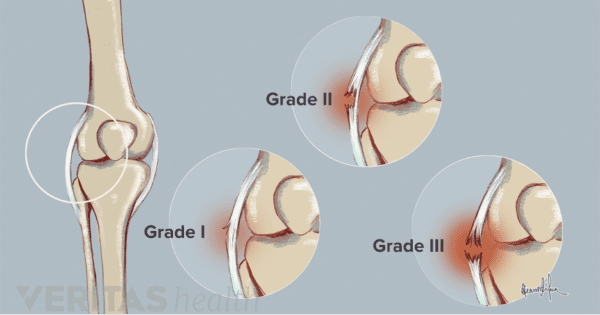
These categories are a good simplified representation of the injury but there’s typically a lot more grey area that’s involved (items like if you’re feeling instability in the knee, amount of pain, if your gait (walking pattern) is altered, etc).
Is it different to the other injury?
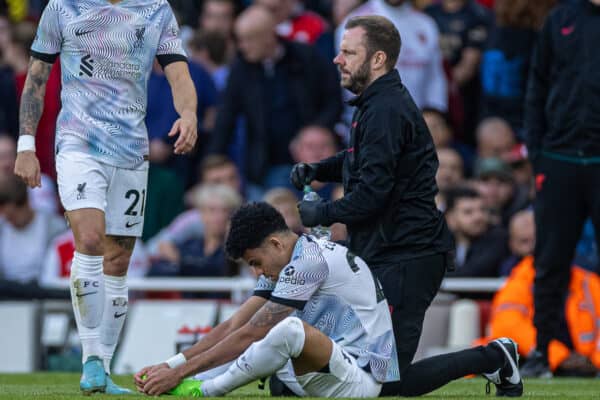
The club hasn’t given much information on the injury so it’s hard to determine if it is the same injury or not.
As mentioned previously, I believed the previous injury to be to the medial collateral ligament (MCL) which sits opposite of the LCL on the inside of the knee but I could be entirely wrong as it’s just educated speculation.
Based on how this injury occurred – “it was a non-situation in training, honestly – nothing, (but he) felt something” according to Klopp – you almost hope that it’s a reinjury rather than a new injury.
That may seem counter-intuitive but a reinjury to an already damaged and healing ligament is unfortunate but not out of the realm of possibility when returning to play and particularly when the intensity is ramping up as it was for Diaz who had returned to team training.
That reinjury risk comes with the territory.
However, a new injury to another knee ligament from an innocuous situation would be potentially more concerning for other underlying deficits in Diaz’s knee – whether that’s compensating for the other injury, movement mechanics, neuromuscular or other anatomical issues.
It opens up a different can of worms.
Is it the same knee?
Not to sound repetitive but we again don’t know since the club has been limited with the information made available.
Going along the lines of the previous question, an injury to the same knee would be more expected than an injury to the opposite knee from a non-contact, “nothing” situation as the manager put it.
Editor’s note: We reached out to Colombian journalist Pipe Sierra, who told us that Diaz’s new injury is the same knee and same injury (LCL) as his original one.
What does the surgery entail?
Some information we do know is that Diaz has gone under the knife for the lateral collateral ligament injury.
If this was a new injury, this implies it was damaged badly enough to warrant a repair.
If this was a reinjury, either the ligament was damaged severely enough or the medical team was concerned with long-term stability and integrity of the ligament following another injury so they opted for surgery this time.
During the surgery, the surgeon will open up the knee using a small cut on the lateral (outer) part of the knee. If the ligament is intact enough to be repaired, the surgeon will stitch it and reinforce it.
If that’s not a possibility or deemed not appropriate, they will drill through the femur (thigh bone) and lower leg using specialised instruments to create tunnels and weave a tendon graft (often taken from other parts of the knee like the hamstring) to replace the LCL.
What’s the return timeline?
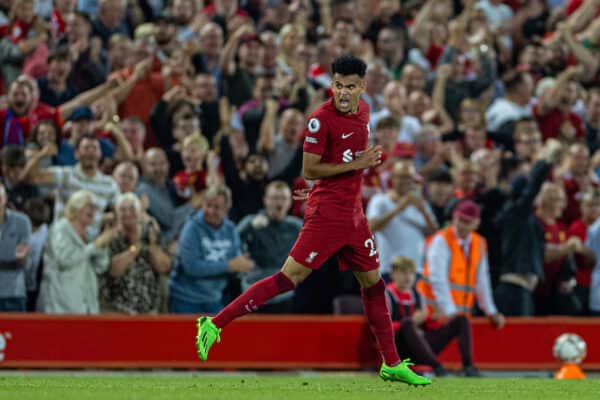
The typical return timeline following an LCL surgery is 10-12 weeks which aligns with reports that Diaz won’t play before March.
That being said, there is some variance on return timeline depending on how Diaz responds to physio and how quickly he progresses through the different stages.
Although tissue healing timelines need to be respected, return to play at the elite level has far more emphasis on a criteria-driven timeline where the player meets certain milestones and then moves onto the next stage of rehab.
Regardless of specifics, how concerning is to have two knee ligament issues in quick succession?
It’s obviously concerning and for multiple reasons.
Firstly, any ligament damage is going to impact the full stability of the knee.
Secondly, you will have multiple deficits including loss of strength, neuromuscular control, discomfort, and overall fitness.
Thirdly, there’s the mental component of having to come back from injury and regaining rhythm and confidence in the knee while overcoming kinesiophobia (fear of movement).
Now you multiply this by multiple ligament injuries and naturally that’s concerning.
Lastly, and this should be on the tip of the mind after this Diaz situation, there’s always risk for further injury when ramping up – whether that’s during the early stages or later stages of returning to training and returning to matches.
The latter is especially impacted by the now extended loss of playing time and fitness deficits.
Key considerations when Diaz returns?
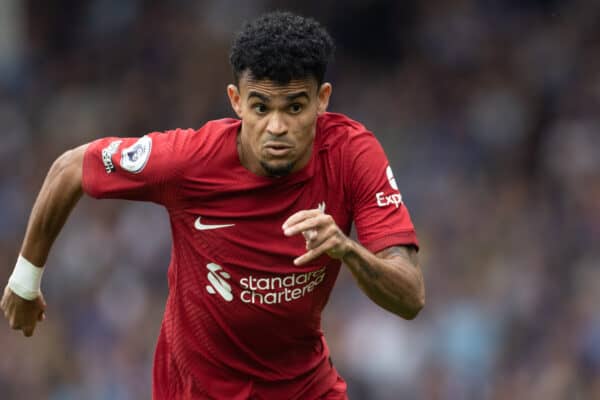
The major consideration is the fact that Diaz will likely have missed four, possibly five months of football prior to making his return and then will be returning during key months of the Premier League and Champions League, both of which lend itself to higher intensity.
Considering what we discussed about reinjury risks and research links higher intensity games to higher injury risk, the name of the game with Diaz will be patience and I fully expect Liverpool’s superb physio staff to be methodical and measured with his return.
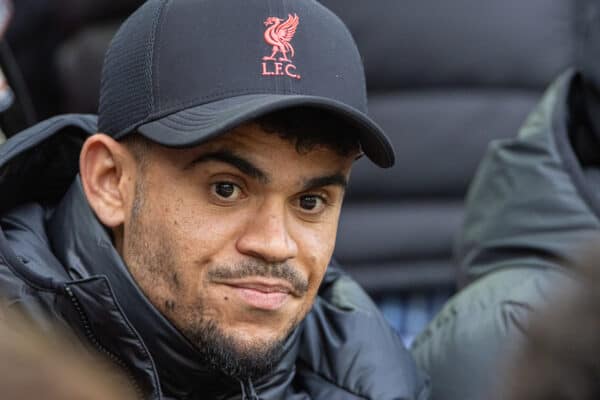



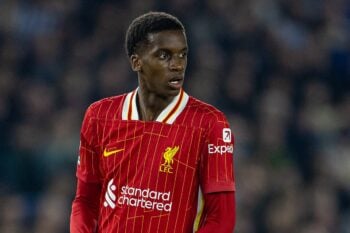


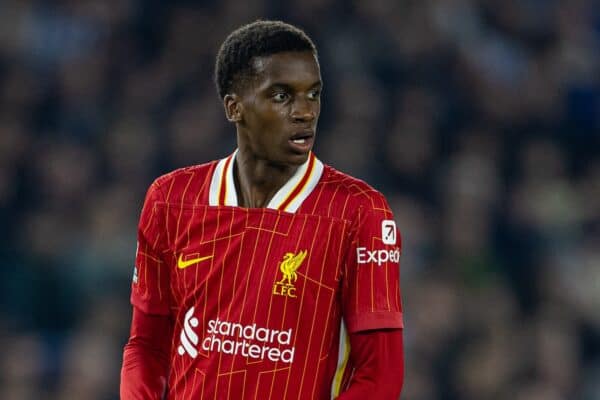



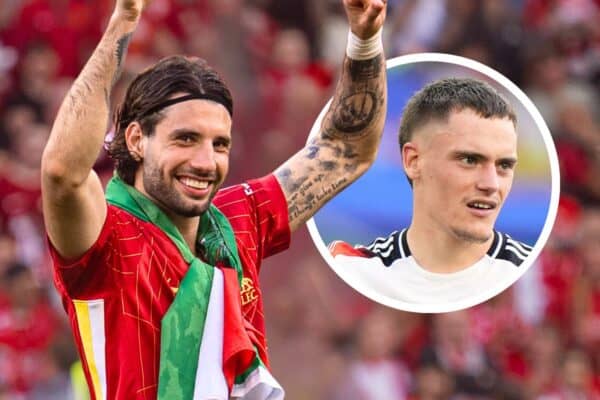
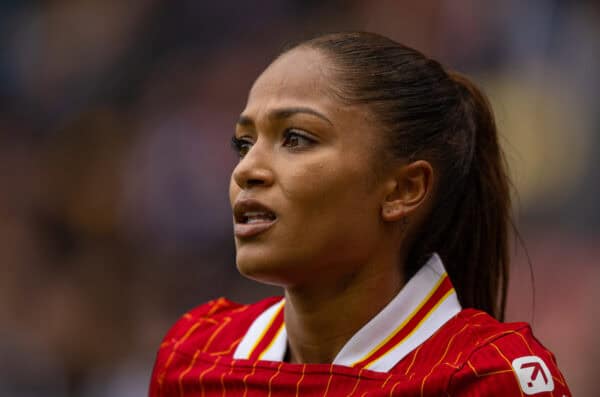
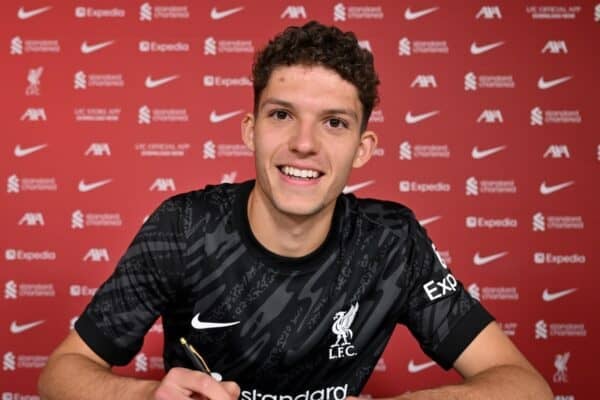


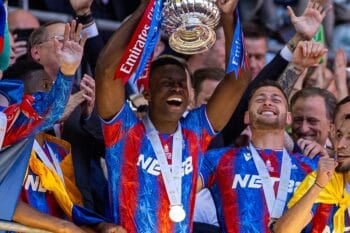
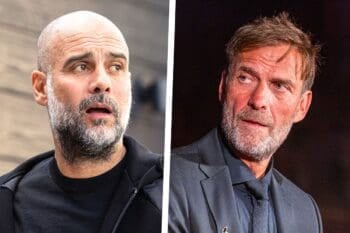
Fan Comments